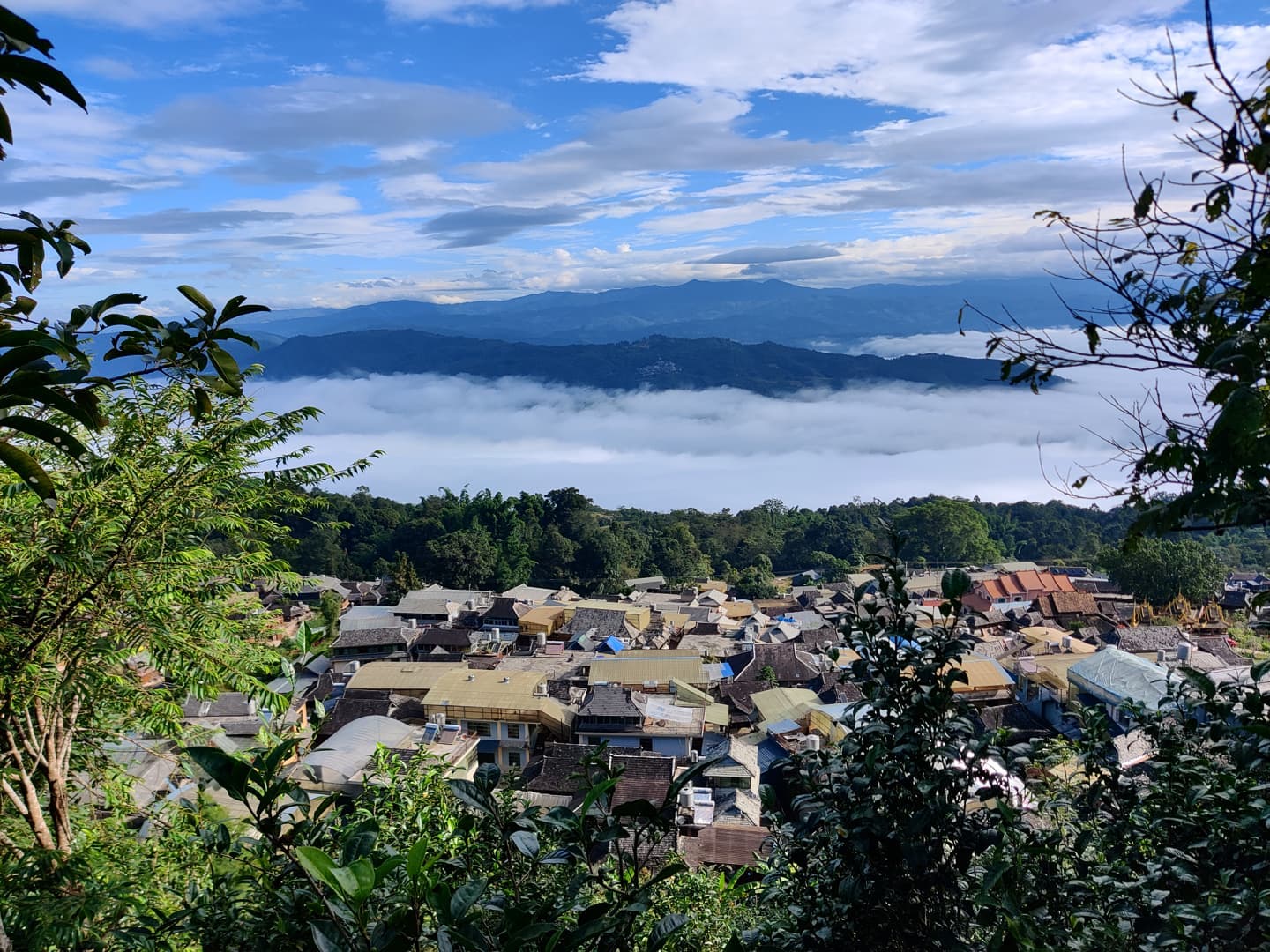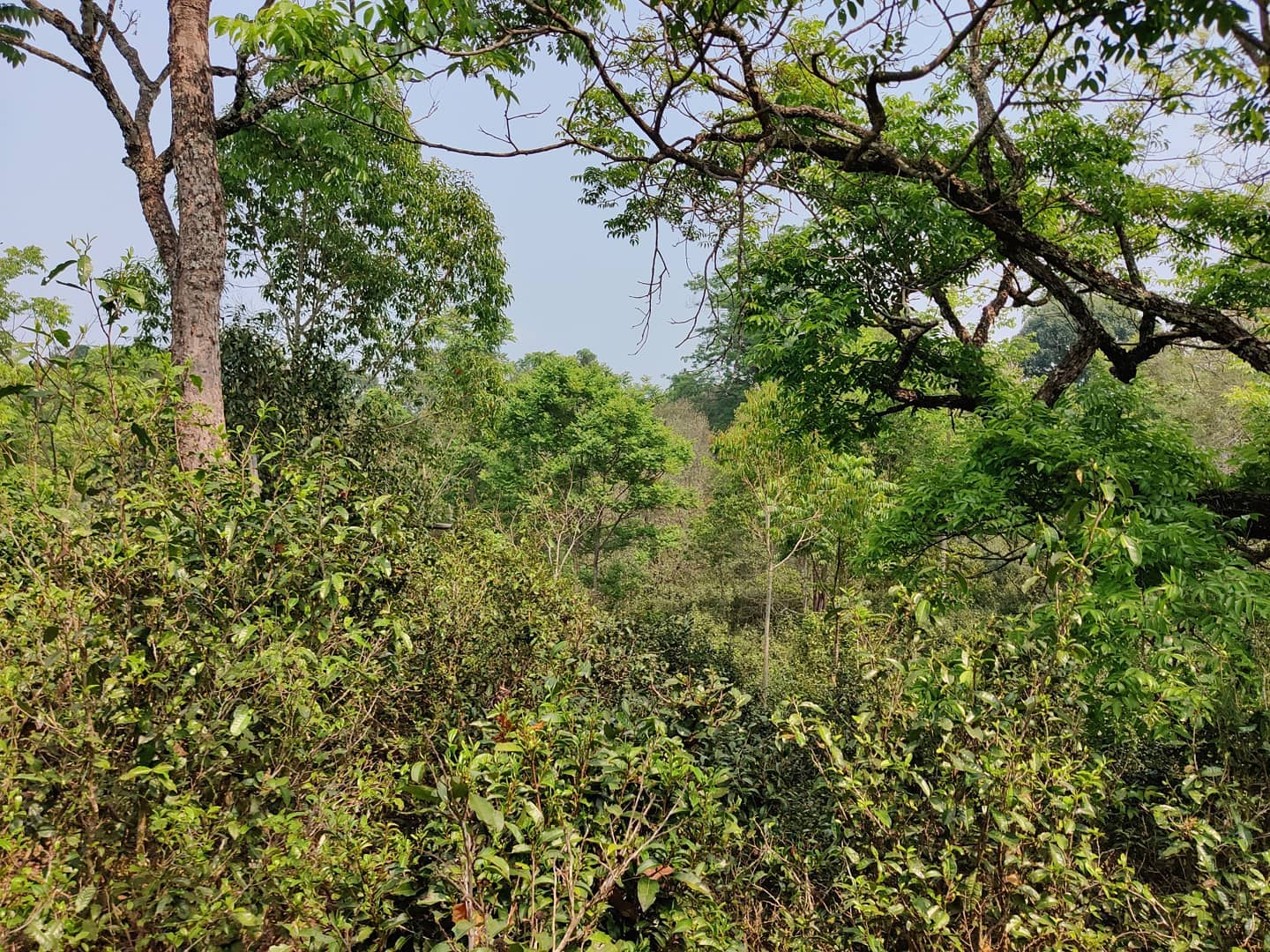In China, agroforestry serves up tea with a spoonful of sustainability
Nov 8, 2021
- In Yunnan, China, smallholder farmers applying agroecological principles to tea cultivation have seen results in the form of better-tasting tea, lower management costs, and richer biodiversity.
- With ethical consumerism on the rise, integrating agroecology could be an opportunity for tea farms to contribute toward conservation goals, experts say.
- Tea farmers and scientists have observed a shift toward more sustainable farming practices, but highlight a need for government policy that can further boost these bottom-up changes.
- By sequestering carbon and contributing to local food security, agroforests can help humans adapt to and combat the climate crisis.
SINGAPORE — On a vast plateau atop Jingmai Mountain in Yunnan, China, nearly a mile above sea level, grows a forest of ancient tea trees. During summer, silvery cobwebs line the gnarled specimens, some of which are more than 200 years old and up to 8 meters (26 feet) tall. Workers perch on their branches, filling bag after bag of fragrant tea leaves. Overhead, 50 m (164 ft) evergreen trees loom, casting the forest in their dappled shade.
William Osmont, owner of the tea forest and a Yunnan-based tea production company called Farmerleaf, tells Mongabay in a phone interview the yield from such “ancient tea gardens” is far poorer than what you would get from a monoculture tea plantation, or even a younger and more productive tea forest. But the unusually complex and concentrated flavors makes it worthwhile.
“Just like in wine, every place has a different taste,” he says. “Ancient tea gardens have a different ecosystem. They have more biodiversity and are closer to a regular forest. And their tea is richer with a more complex fragrance.
“When you drink it, you get a good sweetness in the throat,” he adds. “Good tea has a concentrated presence in the mouth that is very much like a good wine or a good chicken soup. And it can make you feel very, very calm or a bit high.”
Contrast that with the way tea is commonly grown in larger tea estates, in monocultures of small bushes sprayed heavily with chemical fertilizers and pesticides to keep production levels high, and ancient tea garden cultivation may seem more art than commerce. But it is a profitable trade.


Simpler management than intensive tea plantations
Osmont, who is French, first started selling tea online in 2011, as a broke university student. “My first year I sold only $8,000 of tea. At that time, it was just money to be able to afford trips to China during the summer.” He had fallen in love with Yunnan, its tea and its people; after graduation, he moved to the province to live with his wife, Yubai, a local. They started Farmerleaf in 2016.

Yunnan is famous among tea connoisseurs for its pu’er tea. The region’s steep mountains, lush forests and mild climate are home to some of the world’s oldest Camellia sinensis tea trees. To make pu’er, leaves are typically fermented (with some aged for decades) before brewing. Aged pu’er is dark in color, with a rich and earthy taste.
Today, Farmerleaf produces pu’er known for its fragrance of orchids and honey, and a taste of bitterness that changes quickly into a fresh sweetness in the throat. The Osmonts, who sold $200,000 of tea last year, own 1 hectare (2.5 acres) of ancient tea gardens and 2.7 hectares (6.6 acres) of “natural tea gardens” on Jingmai Mountain in Pu’er county. The latter, which are younger tea forests only a few decades old, yield twice as much tea as the ancient tea gardens, but sell at one-fifth the price.

Like other tea farmers on Jingmai, the Osmonts use traditional agroforestry principles to tend to their ancient and natural tea gardens, growing other types of native trees alongside their tea trees. The result is a thriving ecosystem rich with rare and endemic flora, fungi and insects, that reduces the need for synthetic fertilizers and pesticides.
“Our shade trees naturally lose leaves over time, which adds to the organic matter in the soil, making it more fertile,” Osmont says. “We don’t use pesticides, because we are protected by the ecosystem. We have natural predators like spiders, which helps prevent pest outbreaks. It’s very simple management compared with intensive tea plantations.”

Aligning agriculture with conservation
What does it mean to integrate agroecological principles into a tea plantation?
Selena Ahmed, an ethnobotanist at Montana State University in the U.S., says it can look anything like preserving patches of forests within plantations; planting diverse varieties of trees (including fruit trees, which support livelihoods while hosting local fauna); maintaining an understory of herbs to suppress weeds, enrich soil and attract pollinating insects; conserving genetically diverse wild tea seeds and seedlings; tolerating certain tea pests, and more.
When tea farmers like the Osmonts use agroecological principles to tend to their land, they support native biodiversity while lowering their own management costs, adds Annesha Chowdhury, a researcher at the Ashoka Trust for Research in Ecology and the Environment (ATREE) in India.
For example, planting shade trees could attract more birds, which are a natural form of pest control. “The more you introduce complexity into your plantation system, the more the cost of managing that system goes down,” she says.

While researching how tea plantations can better harbor diversity, Chowdhury says she has observed growing interest among farmers in major producing countries such as China and India in adopting sustainable farming practices. Such trends provide an opportunity for agricultural systems, which have “historically been terrible” for biodiversity, to finally align with conservation goals, she says.
“People used to think of tea plantations as being extremely bad for biodiversity because they were created by clearing natural forests. And it’s true,” she says. “But there is more and more evidence now that [certain types of] tea-growing systems that incorporate elements of agroecology can support biodiversity. And it’s not just larger mammals, but sensitive taxa like birds and insects too.”

With ethical consumerism on the rise, Chowdhury says, the tea-growing industry has been trying to introduce more elements of sustainability in its operations. From the Gisakura tea estate in Rwanda, which prides itself on the large troops of colobus monkeys that live within the plantation, to the development of elephant-friendly tea certification standards, changes are “happening from bottom-up.”
“What we need now, is for there to be a good match of state policies to these bottom-up practices, to give time and support for this change,” she says. “It’s not about passing a law to say all tea plantations must be organic now. It’s an industry after all and there are livelihoods at stake.”

‘People don’t spray pesticides because they are bad people’
Osmont can rattle off the benefits of agroecology, but it was neither his appreciation for nor his knowledge of it (he has a degree in agroecology and sustainable agriculture) that led him to practice sustainable farming. It was, he says, a “matter of government policy.”
Up until 2010, Pu’er county had been full of intensive tea plantations. A tea boom in the early 2000s, driven by newly rich Chinese looking to explore the health benefits of fermented pu’er, had drawn a flood of farmers and traders to Yunnan, where they carved more and more plantations from forested hillsides.

From 1997 to 2007, the price of pu’er increased tenfold, to as high as $150 per pound for the finest aged tea. Locals started speculating on pu’er, putting their savings into an asset whose value they thought would only go up over time. In 2008, the bubble burst, bankrupting thousands.
Rebuilding of the tea industry began soon after, but in a vastly different manner. Osmont recalls the government clamping down on intensive agriculture, placing limits on plantation densities and pesticide use in key regions. It worked: Farmerleaf and other growers went organic. By producing higher-quality tea in smaller amounts, they were able to charge a premium.

“If it wasn’t for the government, I don’t think we would have all switched to organic agriculture,” Osmont says. “A lot of these things have to be done at scale, because of reputation. If I do organic farming, but all my neighbors don’t, I might not be able to sell my tea for a higher price.
“Too often, we make the issue of pollution, a question of ethics,” he adds. “But people don’t do organic farming or spray pesticides because they are good or bad people. It’s mainly a question of economics, what’s smart for the farmers to do in terms of income sustainability.”

A way to adapt to, and combat, climate change
As the Earth warms, incorporating agroecological principles into tea plantations not only supports conservation goals, but can also help in adapting to and combating climate change, Ahmed says.
For instance, planting different varieties of shade and fruit trees can make plantations more effective carbon sinks, even as they regulate the microclimate and protect tea leaves from hailstorms and other extreme weather. In the event of a drought or other supply chain disruptions, agroforests can also contribute to local food security, she adds.
Osmont says he expects the tea industry in Yunnan to continue moving toward small-scale sustainable farming. “In future, I think it will look a bit like the wine industry in Europe,” he says. “Instead of large tea estates, you’ll have lots of family businesses, with a variety of traditions and products, who sell to local restaurants and supermarkets, or directly to consumers.”

He adds that the growing trend of livestream selling on social media platforms such as Douyin (the Chinese version of Tiktok) has given small businesses a boost. With interactive livestreams and robust logistics connecting tea farmers in remote areas to urban consumers, “it’s a great opportunity for farmers to build their own brands” — and what they stand for.
Banner image of workers stir-drying tea leaves in a hot wok. Image courtesy of Farmerleaf.
Citation:
Chowdhury, A., Samrat, A. & Devy, M. S. (2021) Can tea support biodiversity with a few “nudges” in management: Evidence from tea growing landscapes around the world. Global Ecology and Conservation, 31. doi:10.1016/j.gecco.2021.e01801
FEEDBACK: Use this form to send a message to the author of this post. If you want to post a public comment, you can do that at the bottom of the page.